HTC One
11:04
The HTC One and the Samsung Galaxy S4
are the two Android smartphones to beat as of spring 2013. This is
HTC's flagship phone and it runs Android 4.1.2 Jelly Bean with the very
modern and sleek HTC Sense 5 UI. The smartphone has a 4.7" full HD Super
LCD3 display that's simply one of the best on the market and it's
currently the fastest phone with wonderfully high benchmark numbers. The
HTC One will be available April 19 on Sprint and AT&T for $199 with
contract ($299 for the 64 gig model on AT&T) and it will be
available this spring from your favorite "uncarrier" T-Mobile. HTC is
also selling a SIM unlocked 32 gig model as well as the SIM unlocked and
bootloader unlocked 64 gig developer edition for $575 and $650
respectively. For our review, we look at the AT&T 32 gig model.
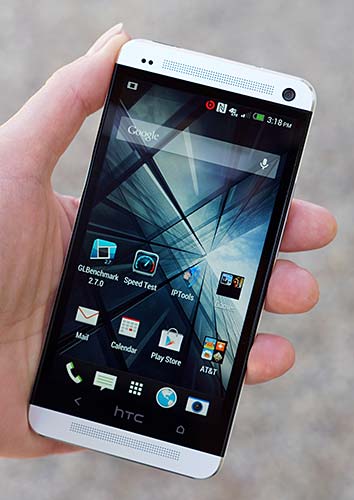
Specs at a Glance
The HTC One has the new Snapdragon 600
quad core CPU clocked at 1.7GHz, 2 gigs of RAM and 32 or 64 gigs of
storage. The phone has 4G LTE, dual band WiFi (including support for
802.11ac), Bluetooth 4.0, NFC, a GPS with GLONASS, a consumer IR port
for AV gear control, USB OTG host, a front 2.1MP camera and a 4MP main
UltraPixel camera. The HTC One supports DLNA and Miracast wireless
display and it has stereo speakers with Beats (called BoomSound).
Design and Ergonomics
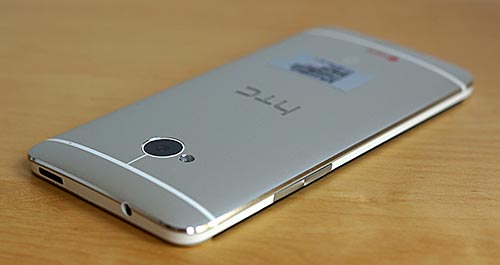
The HTC One features a unibody aluminum
casing that's available silver with white accents and black, though not
all carriers will offer both colors. It looks and feels like a high
quality product with styling and design that equals the iPhone 5s.
Simply put, this is a stunning and elegant phone. At 5 ounces it feels
serious but not too heavy and the size is in line with other 4.5" to 5"
smartphones. The casing is milled from a single piece of aluminum alloy,
that's injection molded with polycarbonate in blank areas that allow
antenna access. In fact, HTC's design and diversity antenna make for
perfectly good reception despite all that RF-blocking metal. The phone
has absolutely no flex and no unsightly seams. Given the thin design and
conductive aluminum, the phone does get warm (sometimes quite warm)
when playing 3D games like Real Racing 3. However it never overheated
when playing games or recording video. The display is protected by
Gorilla Glass 2.
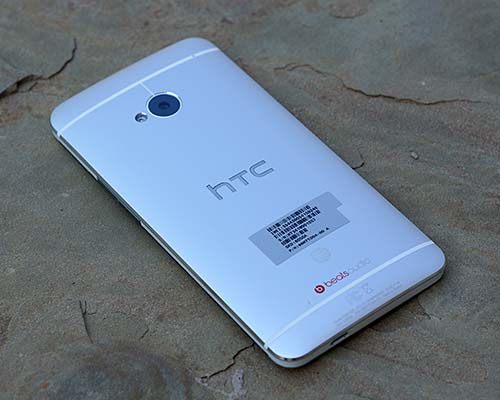
The curved back with tapered sides makes
this relatively large phone feel comfortable in hand (disclosure: I'm
5' 10" and have large hands and long fingers). The fairly straight edges
provide grip points so the phone won't easily slip from your fingers.
The aluminum back is by no means slick and it doesn't show fingerprints.
Good stuff. At its thickest point, the HTC One measures 0.36", which
isn't as uber-skinny as the 0.31" Sony Xperia Z, but it is slimmer than
the Nokia Lumia 920. The phone's front 2.1MP camera is located above the display as is the notification LED.
The headphone jack is up top, as is the
power button that also functions as the IR window for the AV remote. The
phone has a micro SIM card slot but no microSD card slot--that's right,
there's no expandable storage. For those of you with large media
libraries that you want to carry with you, the 64 gig developer unlocked
and AT&T 64 gig versions are the ones to get. The micro USB port
also supports USB OTG host (we've used it with flash drives) and MHL out
for HDMI to a TV, monitor or projector. Given the sealed unibody
design, the battery isn't removable. In fact, the phone is very
difficult to take apart, so even adventurous types won't want to
disassemble the HTC One to replace the battery.
HTC thinks different when it comes to
front facing buttons, and we're not sure that's a good thing. The One
has two capacitive buttons rather than the usual three: Home and Back
are here but not the Menu button. The HTC Logo sandwiched between the
capacitive buttons is merely a logo; it doesn't function as a button. We
like capacitive buttons since screen real estate isn't taken away by
on-screen equivalents, but apps that don't support Google's preferred
new way of doing things will get a bottom overlay strip on-screen just
for the on-screen menu button. The buttons aren't very sensitive to
touch, and we sometimes had to hit a button a few times before it
registered.
Display
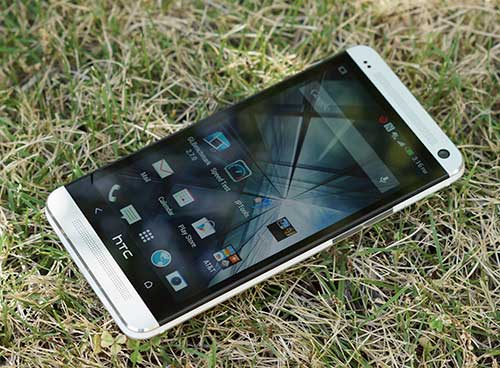
I could spend all kinds of words telling
you just how great the HTC One's Super LCD 3 display is, but I'll cut
to the chase: it's superb. Awesome. It's one of the best screens on a
mobile phone. I can't imagine anyone wouldn't love it. OK, now for the
specifics: it's a full 1920 x 1080 with an absurdly high 468ppi pixel
density. Honestly, once we surpass the mid 300's, most eyes can't see
the difference. It looks very sharp with smooth text and clean graphics.
Colors are natural and balanced (more so than Super AMOLED displays)
and blacks are deep. Contrast is excellent and the display looks painted
on when viewed from an angle because the image doesn't degrade off
axis. The ambient light sensor works well and keeps the screen fairly
bright, unlike Samsung Galaxy phones whose auto-brightness is too dim
for my tastes.
The HTC One and the iPhone 5 (326ppi) have two of the most impressive smartphone displays on the market (the HTC One X
is no slouch either). Yes, the One has higher pixel density than the
iPhone 5, but the naked eye isn't sharp enough to see the difference.
Where the HTC One wins is resolution: it's significantly higher than the
iPhone 5's 1136 x 640, and that higher resolution makes sense given the
significantly bigger panel compared to the 4" iPhone 5. That big
display feels like you've made the move from a 32" to 55" TV: it's
simply capacious. Of course, you'll pay the price in the added height
and width of the HTC handset.
BoomSound
Is the name BoomSound cool or kinda
embarrassing... I'm not sure which, but I can tell you these are the
best speakers you'll hear on a mobile phone. Granted, that doesn't say
much since phone speakers are often meek and mono, but the front-facing
stereo speakers with Beats Audio enhancement sound like a tablet or
Ultrabook more than a phone. The HTC One makes my Samsung Galaxy Note II
sound thin. If you listen to multimedia through speakers, you'll
appreciate BoomSound and its built-in amplifiers. Oddly, the
speakerphone and notification sounds aren't as impressive as multimedia
audio, but they're certainly adequate and comparable to other phones.
Sound through the headphone jack is very
clear and the included trendy spaghetti wire earbuds are better than
average for bundled buds, though we like the richer bass in Apple's
EarPods better.
Calling and Data
The HTC One on AT&T is a quad band
GSM world phone with 3G HSPA+ (which AT&T likes to call 4G) and LTE
4G. On Sprint, the One supports that carrier's CDMA network with EV-DO
Rev. A 3G and LTE and it has GSM roaming. T-Mobile's version is likewise
a GSM world phone with 3G and 4G LTE. So far, Verizon hasn't said
they'll offer the One. All variants have a micro SIM card slot on the
phone's left side, and HTC includes a SIM eject tool in the box (a
paperclip works too).
Data speeds on our AT&T model in the
Dallas, TX area were excellent on the carrier's LTE network. Download
speeds averaged 18.5Mbps and uploads averaged 15Mbps, with download
speeds as high as 33Mbps. Those are good numbers for our area. Web pages
download quickly and thanks to the fast CPU, they render quickly too.
The phone ships with both the older Android web browser that works with
Adobe Flash Player (and yes, Flash Player is pre-installed) and the
Chrome web browser. We're absolutely thrilled to have the quickly
disappearing Flash Player for those videos with no HTML5 equivalent.
Call quality on our AT&T phone has been good, but not as crystal clear and loud as the Samsung Galaxy Note II, iPhone 5 and BlackBerry Z10 on the same network.
Good news: our first review unit was defective and our replacement
AT&T HTC One and our recently received Sprint HTC One have excellent
call quality for incoming and outgoing voice.
Bluetooth behaved well with a variety of headsets and BMW built-in Bluetooth, and the bug we noted on the HTC One X+ is happily behind us. Volume is good and there were no problems with call clarity on either end.
Horsepower and Performance
Powered by a very fast Qualcomm
Snapdragon 600 quad core 1.7GHz CPU with Adreno 320 graphics and 2 gigs
of RAM, the One is currently the phone to beat for speed. The Samsung Galaxy S4 will soon be here with the same CPU, and will likely score
similarly to the HTC One. But for now, the HTC One earns serious
bragging rights with some first place benchmark scores.
UltraPixel Camera, Zoe and More
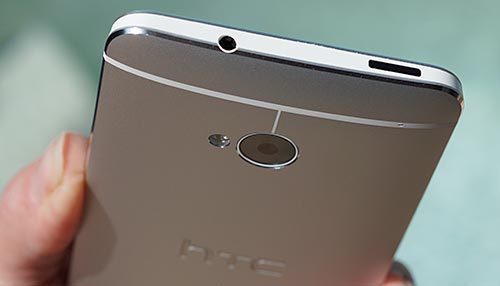
We had our doubts about HTC's new
UltraPixel camera that's just 4 megapixels, but just as with dedicated
digital camera technology, a large sensor with bigger pixels really can
make a revolutionary difference, particularly for low light photography
and capturing fast motion scenes. The HTC takes better low light photos
that we've ever seen with a camera phone, and it rarely needs the flash.
Even daylight photos hold up decently vs. the very good Nokia Lumia 920 and iPhone 5
with much higher megapixel ratings. In comparisons of daylight photos
with those phones and the very good Sony Xperia Z (13MP camera with
Exmor RS sensor), the HTC One's photos lacked fine detail when viewed at
100% on a PC monitor. Tiny details like the lettering on a street sign
aren't as sharp and clear in the HTC One's photos, and while that won't
be noticeable when viewing photos on the One's screen or after shrinking
them for your next Facebook post, it does make a difference when
viewing on a TV, PC screen or printing at full resolution. We also noted
a slight purple tint on outdoor photos and a tendancy toward high
contrast (but many folks enjoy lots of contrast). If you generally shoot
photos in good lighting, you'll likely prefer the Samsung Galaxy S4, Nokia Lumia 920 and iPhone 5
cameras for their greater detail and better exposure settings. The HTC
One's daylight photos often needs a little processing to improve
contrast, something the built-in photo editor does well. If you're a low
light shooter, you'll love the HTC One.
Switch to low light situations and the
HTC One shines, and no we don't mean the flash that rarely fires.
Contrast, brightness and color detail are unusually good, and even
photos taken in near darkness (a wine bar, a living room at night lit by
only one 60 watt bulb) had a surprising amount of detail and accurate
color. Yes, the photos have noise as well, but we're hard pressed to
think of any camera phone or point and shoot that wouldn't produce
images with noise under the same conditions.
The camera has a fast f/2.0 lens, a
backside illuminated sensor (BSI), HDR for photo and video recording,
panorama sweep and a plethora of shooting features. The optical image
stabilization reduces image blur and results in less video shake. It's
really remarkable that most users won't notice the difference between
the 4MP UltraPixel shots and those taken with today's 8-13MP camera
phones.
The HTC Zoe feature shoots one 3 second
video and 20 still photos that creates something like a Vine video. It's
also useful if you want to pick the best shot of a rapidly moving
subject. There's a separate on-screen button to start Zoe and a progress
bar fills in to let you know when it's done. We also like the
animations in gallery where video thumbnails play in grid view and HTC's
customization of the event view where photos taken on the same day
morph into a slideshow complete with a music track and special effects.
You can choose from 6 presentations (visual effects plus a music track)
but you can't use your own tracks or effects. Fortunately, HTC's
selection is very good and that means it offers appeal even after the
novelty wears off.
HTC BlinkFeed
BlinkFeed is addictive, really. By
default it's the dominant home screen, though you can swipe to the
standard home screen easily enough or set another screen to be your
default. I'm a purist and I don't like fluff, but in a day I let
BlinkFeed live to see another day... or 10... or forever. It's a highly
visual news reader (something like Flipboard and Pulse, which I also
enjoy), but it also brings in your TV show schedule via HTC TV, Twitter
and Facebook feeds and calendar entries. It quickly became my one stop
place for things I needed and wanted to know. When the tragic events of
the 2013 Boston Marathon broke, it kept me informed, just as it did for
less weighty things like the next episode of Bones on TV and the latest
tech tidbits. My only complaint is though it has a healthy set of news
sources to choose from, you can't add your own favorite RSS news feeds.
Bah.
HTC TV
Though Samsung has been doing consumer
IR and TV remote for a while on their Android tablets, HTC TV, the
relative newcomer, impresses us more than Samsung's latest on the Galaxy
Note 8.0 tablet. While the Note 8.0's TV app only listed a few of the
many providers in our (Dallas, TX) area, HTC had them all covered. You
can use the app to control your home theatre gear including TV, AV
receiver and cable box via the IR port on the top of the phone--that's
both cool and rare on a smartphone but we've seen it on Sony and Samsung
Android tablets (the Samsung Galaxy S4 will also have this feature).
Even more appealing is the content presentation: you'll side-swipe
through featured shows (based on your preferences), a TV programming
grid (always useful), your own locally stored videos and scheduled
shows. Scheduled shows are those that you mark as favorites, much like
iTV, and it will notify you of upcoming new episodes. While HTC TV is
running, picking the phone up will wake it up from sleep (you can
disable this, but it's quite useful). It also has top taskbar quick
access so you needn't hunt for the app every time you want to control
your TV or cable box.
Battery Life
There's surprisingly good news here: the
2300 mAh Lithium Ion battery that's sealed inside the phone provides
solid battery life. I easily made it through a full day (9am-11pm) on a
single charge with moderate to somewhat heavier than moderate use that
included lots of BlinkFeed checking, social networking, web surfing,
streaming 30 minutes of video, playing an hour of locally stored MPEG4
HD video, talking on the phone for 30 minutes, playing Real Racing 3 for
30 minutes, controlling the home theatre gear at night and shooting 30
photos and 5 short videos. That same usage pattern killed our Sony
Xperia Z by 4pm. While not quite as good as the Samsung Galaxy Note II
with its huge standard battery, it's very good compared to other
current high-powered smartphones with big screens and LTE 4G. HTC phones
aren't fast when it comes to charging, and the HTC One is no exception.
It took 4 hours to charge our phone from 10% to 100%, but it did reach
90% in 2.5 hours.


0 comments